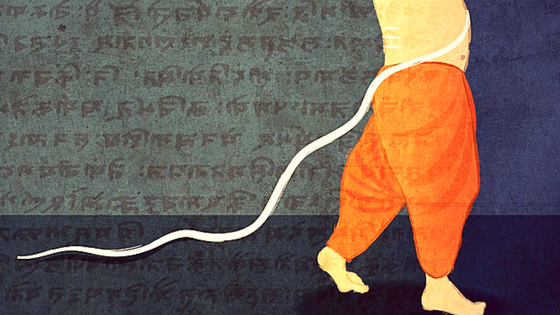
Caste, Brahmin, Culture – Some Random Thoughts
The culture of this land is so Brahmanical that only considered an ideal way of life is living a life of Brahmin. Such colonisation is considered Hindu idealism and has become a way of life, ideology, a philosophy that are so rooted in every individual that even non-conformist liberals often are grappled by its phoney magnanimity.
There is a vile old but existing trick which has historically been used by Brahmins to subjugate the masses. This is the inclusive tool as it might be called. But its work is quite the opposite of inclusivity: to exclude the political, social-economic rights of individuals and deny them justice and look down upon their cultural heritage. This shows their meanness. They will say everyone was Hindus once. Some people became notorious and broke away from their original path of spirituality. This gives them moral high ground to view others as neech (low). They would try to include everyone into a singular fold i.e. the Hindu fold and thus impose upon them mean Brahmanical ideology of oppression. This inclusivity denies Dalits representation in all dominion and discredits them.
The belief of multiple paths to salvation is a sham and is partisan in its universality. It’s a ridiculous idea of saving oneself from being consumed by a deity or higher being.
The concept of purity in Dharmashashtras dictates who is pure and who impure and likewise who should be dominated by whom (caste or gender or both).
A Brahmin will achieve moksha by his karma i.e. to secure his rights. A shudra may earn moksha through one’s karma i.e. perform one’s duties. One caste enjoys all imaginable rights endowed upon itself. On the contrary, duties levied unto another caste remains to suffer.
Brahmins invented ritualistic customs to dominate over other castes. Although the rituals were conducted by the Brahmans, it was only to instil fear of God amongst the so-called low borns. When it was upon the Brahmins to perform their duties, they always discounted it for themselves.
Brahmins always thought of untouchables as a parasite, whereas it is they who are sucking the produce from society and filling their belly since ages.
Brahmins thought so highly of themselves and their puny intellect that they considered other castes to not even have the capacity to think for themselves. They thought they needed to dictate others. At one point some Brahmins understood that their position of rank could be challenged if they would not concentrate/consolidate the power.
The story of Shambaku in the mythical Ramayana clearly shows us how the dwij thought about the Shudras of the time.
Challenge from other religions –
Buddhism was first to challenge the Brahmins’ proposed genealogical aspect of the life of individuals. Buddha was against the Chaturvarna system. Islam failed to act fruitfully against caste as Muslims as well as developed castes among them. The British and East India Company occupation of India did their part. To little extent invasion of Muslim rulers did help Dalits from Brahmanical clutches. Likewise, if the British rule hadn’t had happened then Dalits would be in a much dismal state presently.
Humans are inherently violent and have the evolutionary history of mankind since early ages. This social system has made oppression and exploitation seem to be something as sacred and righteous in a sense. Gandhi with his ahimsa spectacles and other privileges was blind to the social apartheid his dharma practised. On the other hand, Babasaheb Ambedkar fully understood the Brahminical concept of divinity versus impurity and challenged it throughout his life.
This Brahmanical patriarchy is like the cockroach surviving in all conditions, and living to this day, evolving itself to new conditions without rejecting its exoskeleton – the antithesis to this is Babasaheb Ambedkar.
There have been some champions of social justice during the colonial and post-colonial era but Dr Ambedkar always finds special mention because he has been by far the most influential among all others. A very dense reading of his works is required to fully understand the foremost intellectual of this millennia. Dr Ambedkar should not be seen only as of the prime architect of the constitution but along with his other works which have always been for the people of India. Through the Constitution, Dr Ambedkar did what could not have been envisioned previously. But now there is another challenge in front of us: the appropriation of Dr Ambedkar. To get benefit from Dr Ambedkar’s legacy, Brahminical forces have started appropriation of his ideas at a large scale, which needs to be challenged.
Caste dimension in this post-colonial epoch has morphed into Hindu capitalism.
Disenfranchising large parts of our community from political social economic equality has not benefited this country.
Capitalism, in order to survive for eternity, has devised methods such as welfare state and some kind of bottled down capitalism or regulated capitalism and so on. Late capitalism is such an adsorbent that it will create inequality, make poverty, rob the poor and then provide a basic minimum for the lower classes for their bare survival so that their labour can be exploited again and again for the extravagant consumption of the upper class. This phenomenon clearly fits the modern Indian state which may be termed as the neo-liberal caste state led by Brahmins.
Who will challenge Brahminical dominance or Brahminical way of life will always stay the ideal?
Author – Rohit Kumar Das



+ There are no comments
Add yours